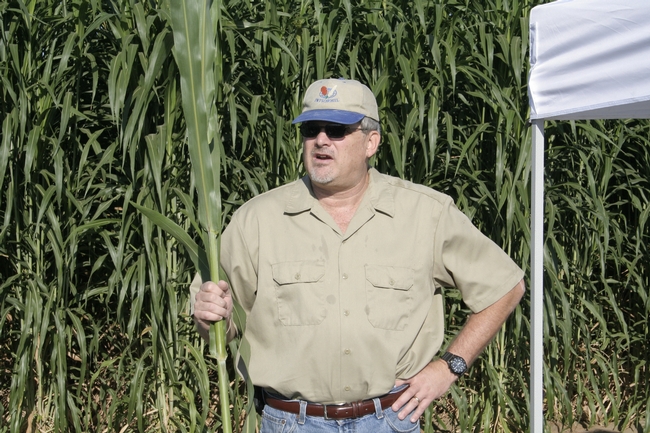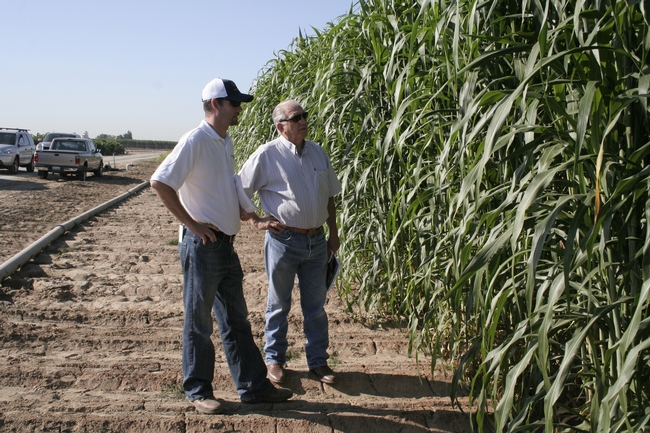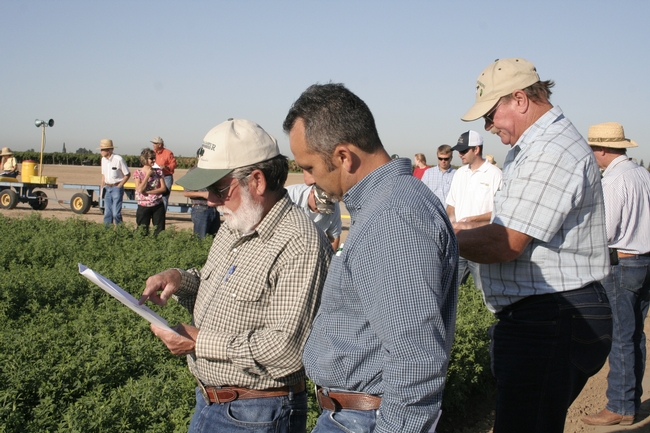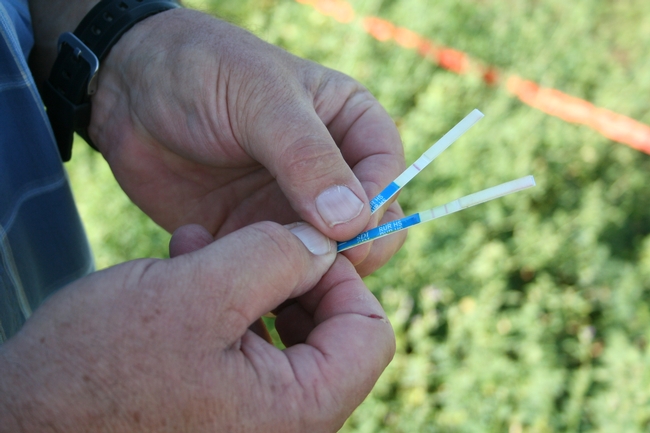
Dahlberg introduced San Joaquin Valley farmers to a new sorghum variety trial during the Alfalfa Field Day Sept. 8. The trial, which compares 80 varieties of forage sorghum, is also being conducted at the UC West Side Research and Extension Center in Five Points, Calif. At Kearney, the 10- to 12-foot-high plants were grown in 84 days with just 8 inches of irrigation water.
"I'm going to push this to be a sorghum state," said Dahlberg, who came to California in January from Texas, where he was director of research for the United Sorghum Checkoff Board. "I'm not suggesting you take out all your corn forage, but experiment with this a little. There is no reason you shouldn't grow forage sorghum."
Dahlberg said the crop could be useful in rotation with traditional California crops, like cotton and corn.
"There are lots of acres on the West Side that I think could benefit with sorghum rotation," he said.

Alfalfa trials
Alfalfa Field Day participants also viewed alfalfa growing at Kearney as part of an extensive, statewide alfalfa variety trial. Similar plots are being maintained at UC's Intermountain Research and Extension Center, about two miles south of the Oregon border, at the Desert Research and Extension Center, about 10 miles north of the Mexican border, and at several locations in between.
UC Cooperative Extension alfalfa specialist Dr. Dan Putnam said the data gathered in these trials are provided to growers on the UC Alfalfa and Forage website to help them select a variety to grow, a decision Putnam admonished farmers not to take lightly.
"You are 'stuck' with your variety decision for many years," Putnam said. "So why not take a little care in choosing your variety?"

Putnam also described an alfalfa trial at Kearney where a Roundup Ready cultivar is growing across the road from a conventional crop. During the first year of the study, tests have shown that there has been no discernible gene flow between the two fields.
Alfalfa grown for seed requires honey bee pollination and has different isolation requirements than hay, he said. A three-mile buffer must be maintained for production of Roundup Ready seed and a five-mile buffer is required for seed grown for markets sensitive to a genetically-engineered trait. However, alfalfa hay crops can be grown in close proximity with very low risk of contamination if growers follow a few simple steps.
Putnam believes that non-GMO farmers can coexist with conventional farmers by using some of the same good-neighbor farming accords that have long been common in agriculture.
"There is a human factor involved," Putnam said. "Neighbors have to get along and respect each others' points of view."
One way for farmers and buyers to be certain a non-GMO crop doesn't have the Roundup Ready gene is with a simple, commercially available test that can be used in the field or on baled hay, shown below.
